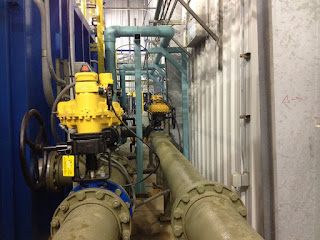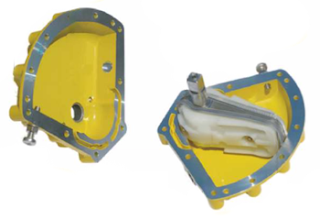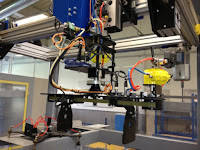A rotary pneumatic actuator with a single-vane design offers several engineering advantages: efficiency, compactness, and durability. Here's a detailed breakdown:
Efficiency
Direct Force Transfer: The single-vane design allows for a more direct transfer of pneumatic force to rotational motion. This direct force transfer reduces energy losses typically associated with more complex mechanisms, improving the actuator's overall energy efficiency.
Reduced Leakage Paths: A single vane minimizes the number of internal seals and potential leakage paths. This design reduces the likelihood of air leaks, ensuring that the pneumatic pressure is efficiently converted into mechanical work. Consequently, the actuator operates more efficiently, requiring less energy to achieve the desired output.
Simplified Control: The single-vane design simplifies control schemes. With fewer moving parts and a more straightforward kinematic chain, the actuator's response time is faster, and control systems can be more easily optimized for precision, leading to enhanced operational efficiency.
Compactness
Space-Efficient Design: The single vane occupies only one side of the actuator chamber, leaving the opposite side available for rotation. This design maximizes the use of the internal volume for creating rotational motion, resulting in a more compact overall size than multi-vane or piston-type actuators. This compactness is particularly beneficial in applications where space is limited.
Integrated Functionality: In some designs, the vane itself can be integrated with additional functions, such as a position sensor or damping mechanism. This integration further reduces the need for external components, enhancing the actuator's compact nature without sacrificing functionality.
High Torque-to-Size Ratio: The compact design of the single vane actuator allows for a high torque output relative to its size, which is advantageous in applications where high torque is required but available space is constrained.
Durability
Fewer Moving Parts: The single vane design typically has fewer moving parts than other types of rotary actuators, such as rack-and-pinion or multi-vane designs. This reduction in moving parts minimizes wear and tear, increasing durability and a longer operational lifespan.
Robust Sealing: The simplified design allows for more robust sealing around the vane and shaft, reducing the risk of seal failure over time. The enhanced sealing improves protection against contaminants and ensures the actuator maintains performance integrity under harsh operating conditions.
Balanced Load Distribution: The design inherently balances the forces on the vane during operation, reducing stress concentrations and distributing wear more evenly across the actuator's components. This balanced load distribution reduces the likelihood of premature failure and enhances the actuator's overall durability.
Resistance to External Contaminants: With fewer external interfaces and a compact form factor, the single-vane actuator is less susceptible to contamination from dust, moisture, or other environmental factors. This resistance contributes to its durability in challenging environments, such as industrial or outdoor applications.
Conclusion
The single-vane design of a rotary pneumatic actuator provides significant efficiency, compactness, and durability advantages. Its ability to deliver high torque in a compact form and its robust and efficient design make it a reliable choice for a wide range of industrial applications where space, energy efficiency, and longevity are critical factors.
https://kinetrolusa.com
972-447-9443




















